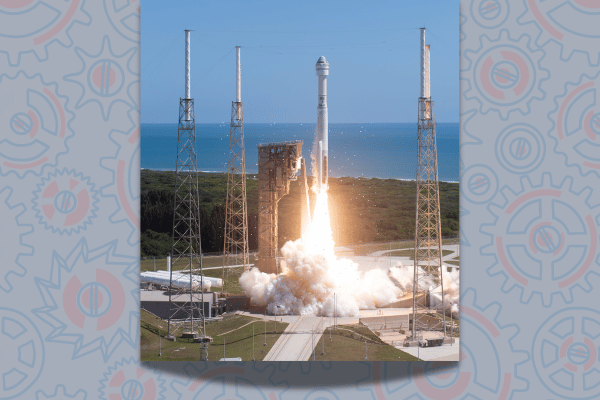

In Greek mythology, Calypso is said to be the daughter of Titan god Atlas. Atlas has been burdened for eternity to hold the heavens and the sky in place to protect all life on Earth. Some interesting creativity went into naming the first human occupied Boeing spacecraft, Calypso, because this first crewed flight test will indeed sit upon an Atlas V (Five) rocket on its journey into space.
But IAM union members are the ones who do a lot of the heavy lifting on this mission. Various union workers supported the effort to build the rockets and machines that propelled two human beings to the speed of 4.76 miles per second so that their Boeing Starliner spacecraft, Calypso, could catch up to and dock with the International Space Station (ISS). The complete vehicle, first and second stages, are assembled by United Launch Alliance (ULA) members of Local 610 at Kennedy Space Center (KSC) who played key roles in this launch.
Seminole IAM Local 971 members in Jupiter, Fla., built the RL10 engines for L3 Harris Aerojet Rocketdyne used for this launch. These versatile engines are used in the second stage rocket, which are also used on a rocket platform called Vulcan Centaur. Vulcan Rockets are scheduled to have a 14-day interval between launches when fully operational. The 197-foot tall Atlas V rocket was built by IAM Local 44 members at ULA in Decatur, AL.
This launch is the last test flight for the Commercial Crew Transportation Capability (CCtCap) program before a full schedule of flights to ISS commence. This testing and verification process allows human crew flights on the Boeing Starliner to the ISS.
“This is part of the build up to the Artemis Moon missions, which means steady work for this District.” said IAM District 166 Directing Business Representative Kevin DiMeco. “Our members have vital roles in each launch. If Kennedy Space Center shoots it, they make it happen,”
DiMeco pointed out other key IAM players at Florida’s space coast:
The pace of rocket launches is picking up. Last year, the U.S. launched 72 space vehicles out of KSC. The reported goal is 300 launches a year by 2031.
“Things are moving fast to put humans farther into space,” said IAM Southern Territory General Vice President Craig Martin. “The fight to keep America on top in space is worthy of a skilled IAM workforce. That means huge growth in an industry where our members already have strong ties.”
Starliner brought astronauts Sunita “Suni” Williams and Barry “Butch” Wilmore safely to the International Space Station on Thursday.